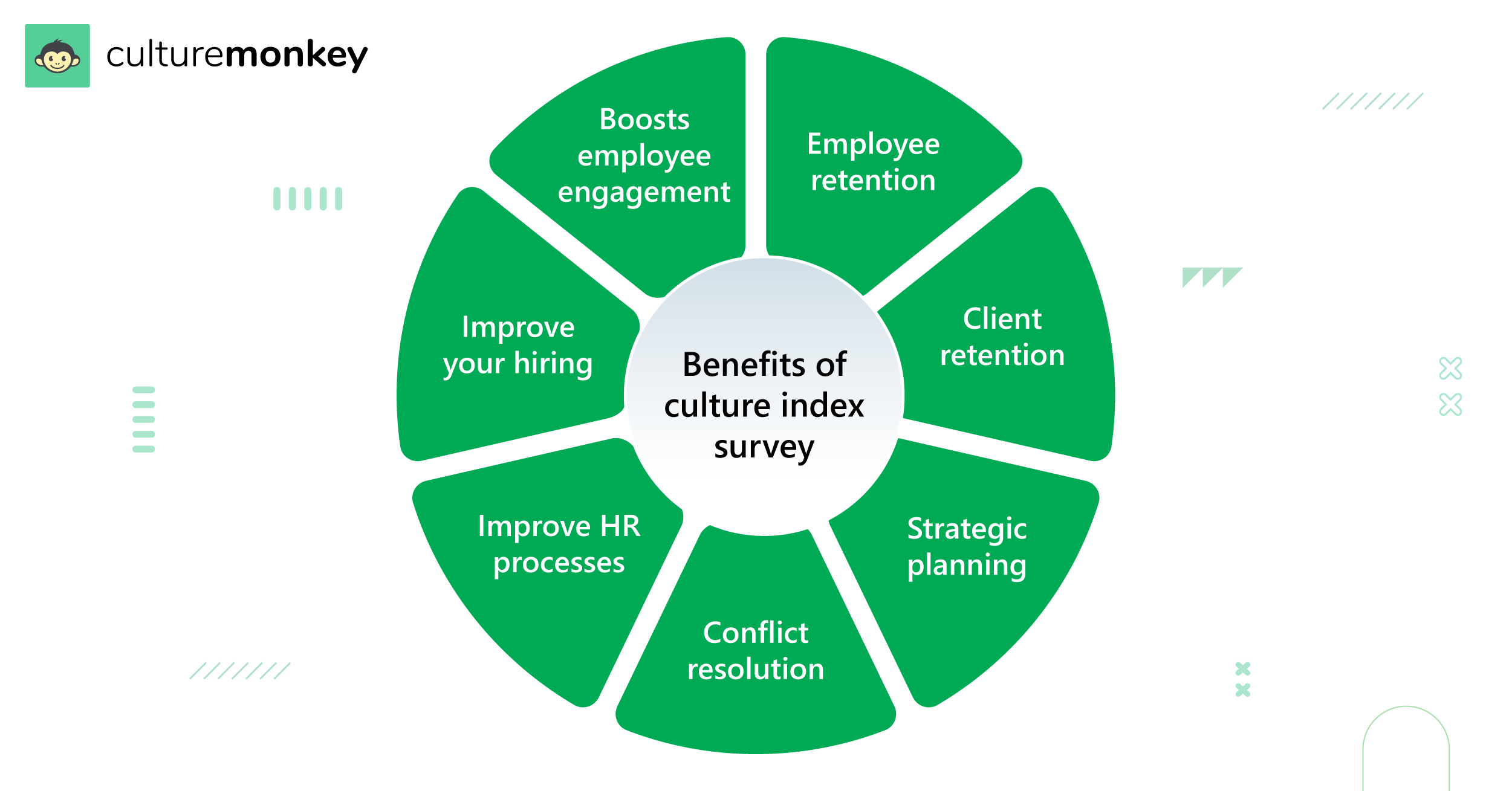Let’s get into the topic straight; what do you think will make your organization a great place to work for? What will make your organization a dream company for employees to work for? How will the best talents in the market make a beeline for your organization?
How can your employee stay longer, be more loyal, and have excellent organizational productivity?
The answer is—Workplace Culture!
The workplace culture defines your organization’s value, and as per Gallup, having an excellent workplace culture attracts top talents, leading to 33% higher revenue.
As per Team Stage, workplace culture is essential for 46% of job seekers.
So for you to attract top talent, one must have a great company culture that gives emphasis to employee wellness and satisfaction. But how will you do it?
As a people leader, you know how hard it is for employees to express themselves freely, and at the same time how difficult it is to measure what they are feeling or what they lack at expressing.
But what if we tell you, irrespective of your organization’s scale, you can analyze how your employees feel with the culture index mechanism. Stay tuned, let’s cover just that for you in this article.
Table of contents:
- What is a culture index?
- Why is the culture index important?
- What is the culture index survey?
- Key features of the culture index survey
- Benefits of culture index survey
- How to execute a culture index survey?
- How to make use of culture index survey questions?
- Culture index survey questions for employees
What is a culture index?


A culture index represents how your employees feel about the workplace, including their opinions, sentiments, emotions, and attitude about the various attributes of their roles and responsibilities.
An organization has employees at different levels; typically, managers- to strategize the complete production and performance of their respective teams, to maintain the workplace and to help their team to have a smooth functioning.
But, as a manager, it is essential to also measure your employees’ feelings about their team culture in regular intervals.
This is where a culture index survey steps in and helps you to reach every perception to know what your employees experience and helps you understand what influences their work culture, beliefs, employee relations, and belongingness.
After analyzing all the factors influencing the workforce, the culture index survey helps you illustrate how your employees feel about being a part of your organization and further gives you insight into what can be improved in your existing company culture framework.
According to PWC Publications, 67% of employers feel that workplace culture is more important than operations or strategy, so even if one of the resources fails, there are high chances of the organization not fulfilling its goal.
The culture index helps one maintain the workplace culture and smooth functioning of all the resources to compete in the market.
Not only that, the Culture Index helps you identify the actual pain points your employees are facing throughout their life cycle with you and further lets you take actions to the problems raised; for example, whether the employees lack engagement due to zero encouragement or feedback from their managers.
Why is the culture index important?


A study from Lorman states that happier employees are 12% more productive and efficient than others.
Imagine there are organizations—A and B. Where organization A does not have many problems as far as their work environment is considered, their employees enjoy coming to the workplace, and all the teams are extremely proactive in completing their job responsibilities and have a proper employee feedback system in place.
Now, organization B faces all the issues with high employee turnover (more than 10%) and low employee engagement, with a lot of employee burnout issues and has a very top-down approach when it comes to setting up employee policies.
Organizations A stands out because they value their top talents, focus on enhancing employee engagement, and make sure their employees are happier at the workplace.
On the contrary, organization B has all these engagement issues, since there is no mechanism to listen to their employees.
This is why having a feedback mechanism in the form of a culture index, comes into play.
Culture Index should be more or less considered to be the north star metric for any organization, when they are aspiring to improve their company culture.
The measuring of the culture index score in your organization will enable you to dentify gaps in employee retention, learning and development etc. and makes all the difference for the growth of the organization.
An organization with a good workplace culture experiences high engagement, employee loyalty, lower employee turnover, and attracts top talents.
What is the culture index survey?


Employees having different perceptions about the organization, management and their bosses is very natural.
If you analyze things deeply, an employees’ perceptions will mostly be according to the work culture, employee relations, organization’s values, and company policies they are subjected to.
If not for the culture index survey, knowing how employees feel about the organization would be more of a deception.
The culture index survey displays how the employees feel about the organization they work for and the factors that influence them in the workplace.
These kinds of surveys include questions that could try to understand their sentiments, opinion, and attitude toward all the elements that impact their roles and responsibilities.
So, the culture index helps employees’ performance and enables them to advance at work by identifying their feelings about their organization.
Implementing an effective culture index survey will provide you with the knowledge of how to help your employees according to their individual requirements.
With the collected data, the culture index survey helps the HR managers and leaders on how to process the employees with the informed decision.
Key features of the culture index survey
The culture index survey has multiple key components that make it stand out from similar assessments. Let’ see why we you need to send culture index surveys to your employees and analyze some of its key features here:
- The survey data collected through the culture index survey is useful in many stages of the employee life cycle, including recruiting, developing, and employee engagement as it helps you uncover hidden insights about your employee’s engagement issues and the data acts as a tool for you to check on employees
- The questions in the culture index survey are simple and easy to understand for the employees to provide their feedback. Also, the survey metrics derived from the feedback are easy to comprehend and actionable for a people leader
- The survey results gathered opens the gate to a wide range of data from employees. A large quantity of data helps you analyze the workplace culture, patterns, and other key insights for further development
- These surveys help you measure the pulse of your employees, understand their concerns accurately and solve their culture and workplace problems accurately measuring the right metrics and drivers of employee engagement.
Benefits of culture index survey


Having culture index surveys as a part of your employee engagement strategy can go a long way, as it would help you understand various aspects of your organization’s employee engagement state and further improve it.
Here are the top 7 benefits of running a culture index survey for your organization:
1. Employee retention
An organization with an attractive workplace culture has higher employee retention and a workspace where the employees have to be enthusiastic to provide better performance.
The U.S. Bureau of Labor Statistics states there was around 47.2% of employee turnover in 2021 (including various industries).
Thus, the culture index survey can help you predict attrition, give you insights on why your employees feel like leaving the organization and will further help analyze your organization’s happiness levels to push employees beyond the organization’s goals.
2. Client retention
Happy employees bring in happier clients, and only a happy customer will keep returning to your business. Thus, employee happiness is an essential part of client retention for your business.
As per Annex Cloud, the probability of making deals with an existing client or customer is 60% to 70%, while approaching a new client is 5% to 20%.
So acquiring new customers is expensive and requires a lot of time and resources, but a culture index survey indirectly helps you retain your clients along with employee engagement.
3. Strategic planning
Strategic planning is a crucial part of any company’s success. Implementing strategic planning is only possible when your people leaders are in sync with your employees thoughts, expectations and their mindset.
As per ClearPoint Strategy’s statistics, 80% of leaders say that their company is good at crafting, but only 44% feel that they are good at implementing.
So, using a culture index survey you can understand the climate of your organization, encourage employees to be more proactive in voicing out their honest feedback and help you frame relevant employee policies.
4. Conflict resolution
Any conflict in an organization requires immediate resolution for the smooth functioning of the business.
According to the Center for Management & Organization Effectiveness (COME), 49% of workplace conflicts are due to clashes between personalities and ego.
Thus, a people leader needs to understand the reason for uneasiness amongst the employees by constantly listening to them through culture index surveys and should take actions to nip them in the bud, so that the issue doesn’t lead to a big conflict within the employees or with the management.
5. Improve HR processes
Identifying the gaps in your company’s employee policies and working on them would help to improve the overall organization’s process of managing employees from pre-boarding to off-boarding stage.
Reducing the human resource department’s workload in knowing what employees feel about their company through the culture index survey can lead to more involvement in onboarding, training, performance appraisal, etc.
A culture index will help you figure out the blind spots in your current company culture policies and would help you improve your procedure accordingly.
6. Improve your hiring
Most companies fail to improve their hiring practices, and still have a very age-old employee hiring process in place, which doesn’t give much importance to diversity, equity & inclusion, preference to remote work etc.
To compete in the market of passive talents, you should focus on enhancing the brand’s reputation by being inclusive and updated in your hiring practices.
Per CareerArc, 89% of job seekers evaluate employers with their brand’s reputation even before applying for the position.
The use of culture index surveys could help you identify the latest trends and requirements for a fresh candidate you hire, so that you could pick the perfectly suited candidate for the proper role and reduce attrition in your organization.
7. Boosts employee engagement
Casual or fun Fridays can’t be your organization’s only employee engagement strategy to cater to their work-life balance needs, especially after the post-pandemic hybrid work era.
Remember, engaged employees will push themselves beyond expectations, maintain positive relationships with fellow employees, and be happy to assist new employees in their training.
According to Gallup, Globally, as low as 20% of the employees are actively engaged in their workplace.
So, it’s essential for people leaders to be more open to listen to your employee’s opinions and ideas, and use the culture index survey to understand what your employees feel.
How to execute a culture index survey?


Just like everybody else, the perceptions of employees will keep changing over time, so companies have to conduct regular culture index surveys to attain higher employee engagement, staff retention, productivity, and culture.
But make sure you have an excellent structural design before implementing the culture index survey to have blueprints of every survey stage.
- Deploy surveys: Make sure you define your focus on the culture index survey, so it will help you frame the questions appropriately. Send them to the relevant department or the employees you want to involve as part of your survey.
- Gather response: Conducting a survey is just a preliminary step of the culture index. After the survey, you will have loads of data to analyze and re-examine your current working process to revamp for launching new.
- Data analysis: Analyze the recent trends over the gathered survey data to learn what will and will not for your organization. Calculate the employee net promoter score to know more about your employees’ loyalty and whether they will recommend your company as a great place to work for, to the outsiders.
- Action plan: Develop a suitable action plan using the culture index survey results to identify and fill the gaps in your company’s process. Keep using the results to improve your systems actively and to show your employees that you care for them in every way.
How to make use of culture index survey questions?
Now that you know the nitties and gritties of the culture index survey, let’s jump into how we can get into action with the culture index survey questions.
The employee feedback survey collected through the culture index survey helps you find better ways to support your employees and improve your organization’s workplace culture.
A feedback survey can help identify areas where the employee needs help and what steps you can take to improve the company culture. The survey provides concentrated suggestions for the management to work on workplace engagement, but make your surveys anonymous for maximum impact.
Culture index survey questions for employees
With this, you would have known how crucial it is to conduct culture index surveys frequently for your employees.
But again, you can’t set up random tools or questions for your employees, as asking irrelevant questions will lead you nowhere, and not addressing your employees’ specific needs shows your lack of interest in employees’ workplace engagement.
So, as a people leader, you should understand how to adapt to technology and leverage it to lead your employees to effective culture index and engagement goals.
Here is where CultureMonkey’s customizable and personalized engagement survey comes in handy just for you.
CultureMonkey’s Culture Index Survey is flexible enough for you to customize questions as per your specific, individual requirement, as they are research-oriented and provide deep insights into your employees to help you encourage them.
Not only that, increasing survey participation rates have never been easier with CultureMonkey’s employee survey software, as it enables you to send survey participation reminders to your employees through various channels like Slack, WhatsApp, Microsoft teams and more.
With enough said about culture index surveys, let us give you the culture index surveys questions that you are looking for:
- How proud are you to work for your organization?
- People from all backgrounds are treated fairly at [Company name]?
- My organization really cares about my mental wellbeing?
- Do you feel that the company’s vision motivates you to grow further?
- My company does have an effective DEI&B policy in place and is practiced well?
- The work I do is meaningful to me.
- Do you feel like you have a good working relationship with your peers and supervisor?
- Do you feel like you can communicate openly and give feedback at the workplace?
- Do you feel that you have a balanced professional and personal life?
- Have you been provided with the required training and tools to perform your job responsibilities?
